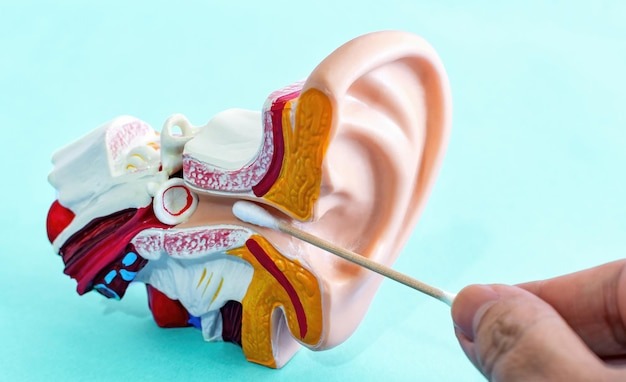Each of us knows the pleasure of using a cotton swab to eliminate a buildup of annoying earwax.
By rotating the tip of the cotton swab inside the ear, we often get instant relief. And seeing the wax on the cotton swab gives you the same unpleasant satisfaction as if you had squeezed out a giant blackhead.
However, doctors warn that it does more harm than good.
Earwax plays an essential role in the health of our ears.
It also traps and prevents dust, bacteria, and other microorganisms from entering the ear and protects the delicate skin of the ear canal from irritation from contact with water.
Over time, in most people, the wax gradually reaches the ear’s opening, where it either falls out or is removed by flushing.
But in other people, the glands in the ear canal produce more wax than can be easily removed.
Doctors warn that using a cotton swab to clean your ears can do more harm than good.
Excess earwax can harden the ear canal and clog the ear, causing several problems, including ear pain, increased risk of infection, and hearing loss.
Earwax affects over two million people yearly, but as wax removal syringes are not offered within the NHS and private treatments cost around £60, most people must resort to home remedies.
The most common way to remove wax is with a cotton bud. However, doctors caution against using cotton buds to clean your ears.
For starters, it should be noted that a cotton swab pushes earwax deeper and deeper into the ear, which ultimately makes it more difficult to remove.
In an interview with MailOnline, Dr. Martin Scurr said: ” As well as damaging the sensitive lining of the ear canal, cotton buds can perforate the eardrum in the worst case scenario.” Ouch!
This homemade method can damage the eardrum and cause long-term problems such as dizziness and hearing loss.
He continued: ” It’s not always the perforation that heals properly, resulting in long-term hearing loss – imagine a tambourine with a hole in it; the membrane can no longer vibrate to transmit sounds to the auditory nerve.”
In exceptional cases, the bump can damage sensitive structures behind the ear canal, causing deafness, prolonged dizziness and vomiting, loss of taste, and even facial paralysis.
In a survey conducted by the RNID, one in ten people who have tried to remove earwax on their own say their symptoms worsened or they caused themselves an injury that required medical attention.
So what can we do?
You can use drops to soften the wax available at the drugstore, but Dr. Skurr always recommends seeking medical advice and not putting any objects in your ears.

 Discuss
More news
Discuss
More news


